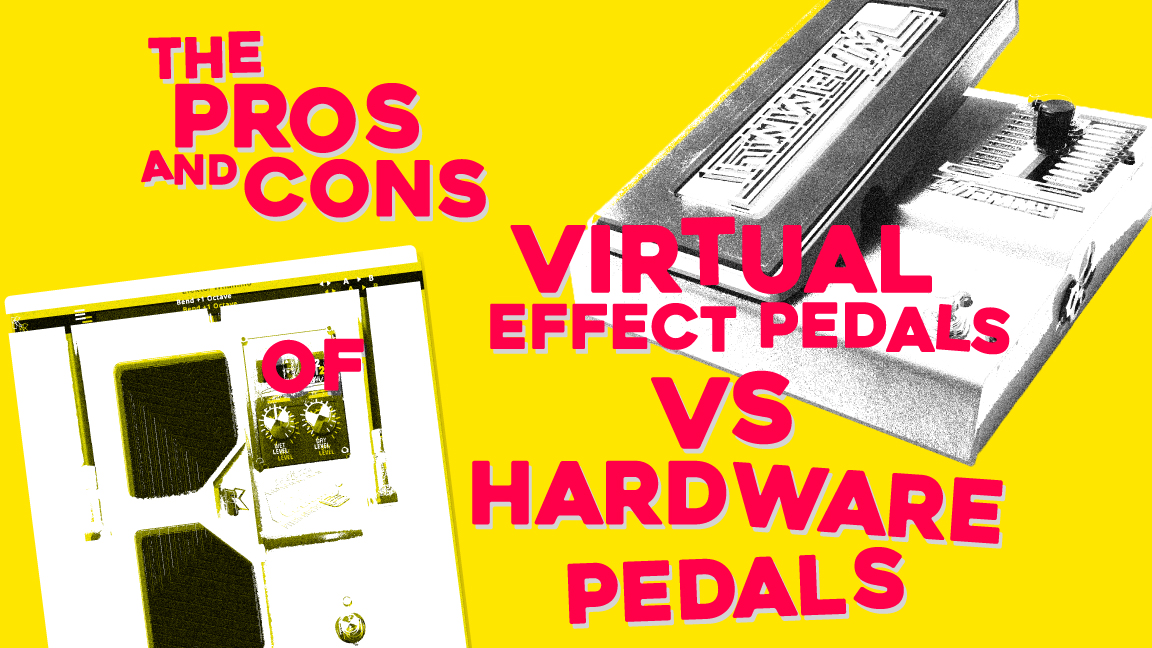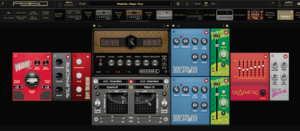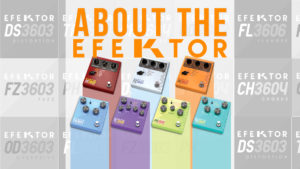 Guitar effects software and VST plugins have brought about a remarkable transformation in the music instruments industry, empowering new-gen musicians and bedroom artists. The accessibility, affordability, and endless customization options offered by these digital tools have democratized the creation process, allowing new talents to flourish and make their mark. The landscape of the music industry has become more inclusive, where the focus is on talent, creativity, and individuality. As guitar effects software continues to evolve, it will undoubtedly continue to inspire and enable a new generation of musicians to express themselves authentically and passionately, regardless of their financial resources or background.
Guitar effects software and VST plugins have brought about a remarkable transformation in the music instruments industry, empowering new-gen musicians and bedroom artists. The accessibility, affordability, and endless customization options offered by these digital tools have democratized the creation process, allowing new talents to flourish and make their mark. The landscape of the music industry has become more inclusive, where the focus is on talent, creativity, and individuality. As guitar effects software continues to evolve, it will undoubtedly continue to inspire and enable a new generation of musicians to express themselves authentically and passionately, regardless of their financial resources or background.
With advancements in technology, virtual guitar effects software, also known as software fx plugins specific in emulating guitar pedal effects, have become increasingly popular. These digital counterparts offer convenience, flexibility, and a wide array of effects. In the realm of guitar effects, the advent of virtual pedal plugins and software has revolutionized the way musicians shape their sound. Guitar effects software and VST plugins have played a crucial role in democratizing the music instruments industry, particularly for the emerging generation of indie or bedroom musicians. These software solutions have paved the way for greater accessibility to high-quality gear and leveled the playing field, where talent and creativity take center stage to empower musicians and fostered a new wave of artistic expression.
From the convenience of the digital domain to the vast possibilities for sonic experimentation, guitar effects VSTs (Virtual Studio Technology) have become an integral part of modern music production. In this article, we’ll delve into the world of guitar effects software highlighting the versatility and power they bring to musicians. We will explore the pros and cons of virtual effect pedals compared to hardware pedals:
I. Democratization in music instruments. Flexibility and Convenience of virtual guitar effect software:
Virtual guitar effect pedals software offer several advantages over their hardware counterparts. Let’s delve into some of the key benefits:
- Versatility and Variety: One significant advantage of guitar effects software is the vast range of effects they provide. With software plugins like Kuassa Efektors, guitarists gain access to an extensive library of effects, including distortions, delays, reverbs, modulation, pitches, and more. These plugins allow for easy experimentation, enabling musicians to craft unique and diverse sounds without needing to invest in multiple hardware pedals.
- Seamless Integration and Processing: Pedal effects software seamlessly integrates with popular digital audio workstations (DAWs) and allows for real-time processing. This integration simplifies the workflow, enabling musicians to experiment, record, and produce their tracks with ease. It harnesses the power of modern computers, providing high-quality sound processing without the need for physical hardware.
- Portability: Guitar effect software eliminate the need for carrying around a bulky pedalboard. With software plugins, all the effects reside in a laptop or computer, making them highly portable. This convenience is especially beneficial for musicians who travel frequently or perform live gigs, as they can simply bring their laptop or use a computer at the venue to access their desired effects.
- Cost-Effective: The best path to access a massive database of gears before investing into the hardware ones. Hardware pedals can be expensive, especially when building a comprehensive pedalboard. In contrast, virtual effect pedals offer a more affordable option. Software plugins like Kuassa Efektor Pedal FX provide a cost-effective solution, allowing musicians to access high-quality effects at a fraction of the cost of purchasing individual hardware pedals.
-

Danila‘s Lintasan Waktu show us how digital music production can be so soulful – almost all of the recording to mastering are done digitally using kuassa plugins.
Accessibility to Great-Sounding Gear: In the past, access to top-tier guitar gear was often limited to those with significant financial resources or connections within the industry. However, the advent of guitar effects software and VST plugins has democratized this access. Now, anyone with a computer and a passion for music can access an impressive arsenal of virtual pedals, amplifiers, and effects, offering professional-grade sound at a fraction of the cost. This newfound accessibility ensures that aspiring musicians, regardless of their background, can experiment and explore a vast sonic palette.
- Leveling the Playing Field: With the rise of social media, online streaming platforms, and digital distribution channels, the music industry has undergone a significant transformation. The accessibility of guitar effects software and VST plugins has contributed to this shift by enabling indie musicians to create studio-quality recordings from the comfort of their homes. This newfound capability has diminished the reliance on expensive studio sessions, giving rise to a new generation of DIY artists who can produce professional-sounding music independently.
II. Sound Quality and Realism:
While guitar effects software offer great flexibility, it’s important to consider their sound quality and realism in comparison to hardware pedals:
- Sound Reproduction: Guitar effects software have come a long way in terms of sound quality. With advanced algorithms and digital processing, plugins like Kuassa Efektor Pedal FXs aim to replicate the sound and characteristics of their hardware counterparts. In the other hand, Kuassa have gone far and beyond in re-model the piece by piece of an analog components using many kinds of methods, while each plugin devs have their own methods and secret sauces, this is the biggest reason why guitar effects software have rise in popularity these days as it advances in parallel in how computing power multiplies each year.
-
Analog “Warmth” and Feel: Many guitarists swear by the analog warmth and feel provided by hardware pedals. They believe that physical components, such as transistors and capacitors, contribute to a more natural and dynamic sound. Virtual effect pedals, while striving for authenticity, may not fully replicate the subtle nuances and interaction of analog circuitry. Veteran guitarists swears by the analog circuitry, while the others swears that all nuances are reproduceable in the digital domain, especially when most guitar hardware components are going digital anyways. One thing that software cannot do 100%, is the immediate “feel” and touch of the hardware knobs and jack-socket interaction at your fingertips.
III. Performance and Integration:
Virtual guitar effect pedals offer certain advantages when it comes to performance and integration:
- Seamless Integration: Software plugins like Kuassa Efektor Pedal FX seamlessly integrate with popular digital audio workstations (DAWs) and recording software. This integration enables guitarists to include effects in their recording sessions, tweak parameters, and automate changes easily. It also simplifies the process of recalling specific settings, making virtual effect pedals ideal for studio work and post-production.
- Latency and Processing Power: Many times, we use our plugins to play a live gig. a potential drawback of virtual effect pedals is the reliance on computer processing power. Running multiple plugins simultaneously may lead to latency issues or strain on the computer’s resources. However, with modern computers and optimized software, these concerns are minimized. Additionally, hardware pedals do not face these processing limitations, ensuring instant response and a seamless playing experience.
Our plugins are widely praised for their effective use of computing performance, and we have had successful live sessions using older 2015 laptops with the following specifications: MacBook Air i5 dual core, 4GB RAM, and a Focusrite 2i2 soundcard, running Amplifikation 360 in standalone mode at 256 buffer size and 48kHz sample rate. Based on this experience, we are sure that if you are using today’s computer with better specs (say an Apple M1 or Intel i7 with M2 storage and 16GB of RAM), you should be able to use our plugins at 128/96kHz without any issues. You can always try our product in demo mode and see if your computer can handle the live situations. - Extensive Sound Libraries and Presets: Many guitar effects software comes with vast sound libraries and pre-designed presets, offering a great starting point for users. These presets emulate iconic tones, allowing musicians to experiment and find inspiration. Additionally, software plugins often provide the ability to create and save custom presets, empowering guitarists to develop their signature sound.
IV. Unearthing Hidden Gems: The Search for Good-Sounding Guitar Effect Pedal Softwares
When it comes to virtual effect pedals software the search for the perfect sound can be a daunting task. Many guitarists have encountered popular options that simply didn’t meet their expectations or failed to suit their personal taste. However, it’s important to remember that the market is not limited to well-known brands with extensive marketing budgets. Hidden gems can often be found among underrated companies that focus on creating exceptional products despite their limited resources.
- Community Forums and Strong Followings: One avenue to discover these hidden gems is through community forums and platforms with strong followings. Musicians and enthusiasts often gather in these spaces to share their experiences, discuss gear, and recommend lesser-known brands. These forums become a treasure trove of information, shining a light on companies that may not have the same level of visibility as larger brands. These underdogs may not be as well-known, but really focused on what they’re really good at which can result in remarkable detailed piece of effect softwares.
- Small Companies with a Focus: Some small companies have carved out a niche for themselves by excelling in specific areas out of passion. With a laser-like focus on their craft, these companies pour all their heart and expertise into creating virtual effect pedals that cater to the unique needs and preferences of musicians. Their smaller size allows them to become very agile pay meticulous attention to detail, resulting in pedals that are finely tuned and offer outstanding sound quality.
- Underrated Brands as Hidden Gems: Several underrated companies deserve recognition for their contributions to the effect plugins market. ValhallaDSP, AudioDamage, NeuralDSP, Tokyo Dawn Labs, Voxengo, Gum Cuisine, Klevgrand, and Kuassa are among the many names that have gained respect within the community. Despite their modest marketing budgets, these companies have cultivated strong followings by consistently delivering exceptional products. Their effect plugins may not have the same mainstream popularity as some big-name brands, but they can surprise and impress with their sonic capabilities.
- Tailoring to Individual Taste: One person’s favorite guitar effect pedal may not resonate with another. The beauty of guitar effects software lies in their vast potential for customization and exploration. A pedal that sounds lackluster or uninspiring to one guitarist may be precisely what another musician is searching for. It’s crucial to remember that personal taste and musical preferences play a significant role in the perception of sound. So, if a widely acclaimed pedal disappoints, it’s worth considering that it may simply not be suited to your particular style or sonic vision.
Conclusion:
Guitar effects VSTs and virtual pedal plugins have revolutionized the way musicians approach sound shaping and creative expression. With their versatility, seamless integration, and vast sound libraries, these software solutions offer unparalleled convenience and flexibility. Options like KUASSA EFEKTOR have gained widespread acclaim for their comprehensive features and exceptional sound quality. Whether utilizing all-in-one software like Amplifikation 360 or individual Efektor pedal plugins, guitarists can access an extensive range of effects and sculpt their unique sonic landscapes. Embrace the power of guitar effects software, explore its potential, and unleash your creativity on a digital canvas filled with endless possibilities.




